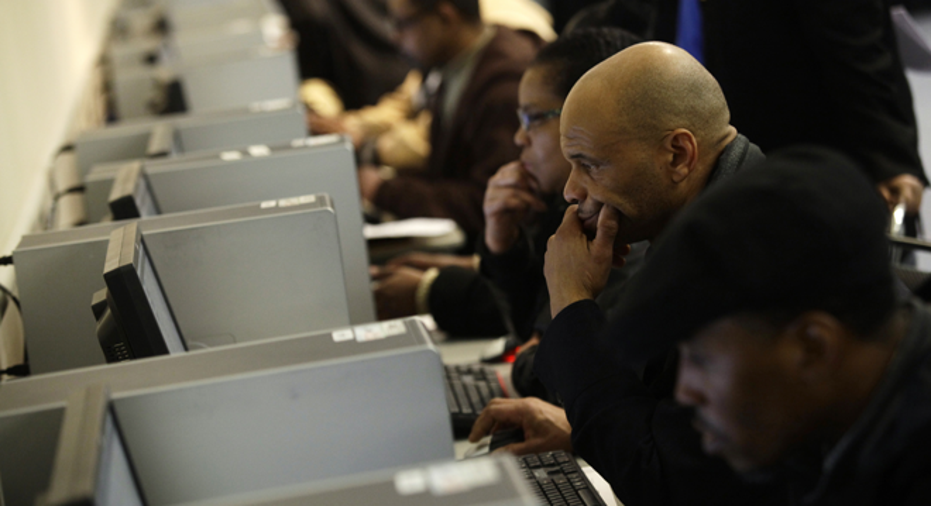Older Americans Working Longer and Fighting to Stay in the Jobs Market

For the last 20 years, the economic landscape has been changing as more people work later in life. But this trend, whether it is for need or enjoyment, was happening well before the Great Recession – and it continues, though older workers have found reemployment more difficult than their younger counterparts.
“From the 1950’s to the 1980’s, there was a decline in labor participation on the part of older Americans,” says Sara Rix, senior strategic policy advisor at the AARP Public Policy Institute. “But in the early to mid-1990’s, we saw a reversal and participation rates [among this group] started inching up…. Many aren’t aware that this is a trend that has been going on for a while and was not caused by the downturn.”
There are many reasons to want to stay in the jobs market, and according to a 2014 AARP report, financial need is at the top of the list – driven by personal or familial health care costs, the need to financially assist aging parents or children and the desire for future financial security. But, the report points out, psychological reasons are top of mind, too.
“With the economy weighing so heavily on people’s minds, it is easy to downplay the personal satisfaction that workers derive from their work,” said the report. “Many older workers see their job as an integral part of their identity.”
In March, the average duration of unemployment for older job seekers (55 and older) was 47.7% weeks, which is higher than February, when it was just 45.6 weeks, the Department of Labor reports. Job seekers under the age of 55 were unemployed for an average of 34.1 weeks in March, down slightly from 34.7 weeks in February.
“People see wisdom in working longer and on top of all of the real financial benefits you receive for every extra year you work.... They also say: What else am I going to do for the next 30 years?”
Joan Cirillo, the CEO and president of Operation A.B.L.E., a Boston-based organization focused on helping older displaced workers get back into the labor market, says over the course of her 19 years with the organization, the jobs market for older workers has gotten increasingly tough.
“We are dealing with an economy that is not robust. Employers are not hiring like they used to, so it’s important to do your homework," she says. "Look at what industries are more open to hiring because many people 45 and older do run into issues where they are a great candidate, but are ‘overqualified,’ and the implication there is that age is a factor.”
In the last year, Cirillo says Operation A.B.L.E. has seen the number of people seeking help almost double, going from 535 people in 2012 to 1,000 in 2013.
It makes sense that people, many of whom are Baby Boomers, are looking for added resources.
In March, almost 45% of older job seekers were long-term unemployed, which means that they have been out of work and looking for a job for 27 weeks or more. That March number is up from February’s 43.5% but is below the 51% for the previous March.
“The system in this country is chaotic and there isn’t good education for job seekers,” says Maria Heidkamp, senior project manager at The Heldrich Center for Workforce Development at Rutgers University. “We’ve just done research looking at whether older job seekers need more education and training to help them get reemployed. It may seem like an obvious finding, but in some cases, it’s probably a good investment, but certainly not in all. We found there is very little data on employment outcomes or return on investment for older job seekers who do pursue training."
Despite minimal data showing outcomes, Cirillo says being comfortable with technology puts a person at an advantage.
“Social media has changed the job search process and if you’re out of work and you don’t understand how to use Linkedin or Twitter, you are really behind,” she said.
Still, it’s not all bad news: Though the labor market participation rate for the 55-plus population dipped to 39.8% from March from 40% in February, March’s participation rate represents an increase of about 423,000 from a year earlier.
Unemployment rates are also lower for older workers than the national average (4.7% for those 55 and older versus 6.7%).
This does not surprise Rix. She points out that many have been able to retain their jobs -- but for those displaced workers, there are many unfair stereotypes that work against this well-qualified pool of people.
“Recent research indicates that once someone does become long-term unemployed, the chances of ultimately finding a job are not good,” said Rix. “Older workers are more likely than their younger counterparts to move from short-term unemployment to long-term unemployment, at which point many of them drop out of the labor force permanently.”
That being said, Rix maintains that Baby Boomers, who make up about two thirds of the older-worker population, will not stop pounding the pavement.
“In the future, I think people are going to continue to work longer, and the trend will continue,” she said. “People see wisdom in working longer, on top of all of the real financial benefits you receive for every extra year you work. And the huge percentage of Baby Boomers who have said they want to work after retirement, also say: What else am I going to do for the next 30 years?”